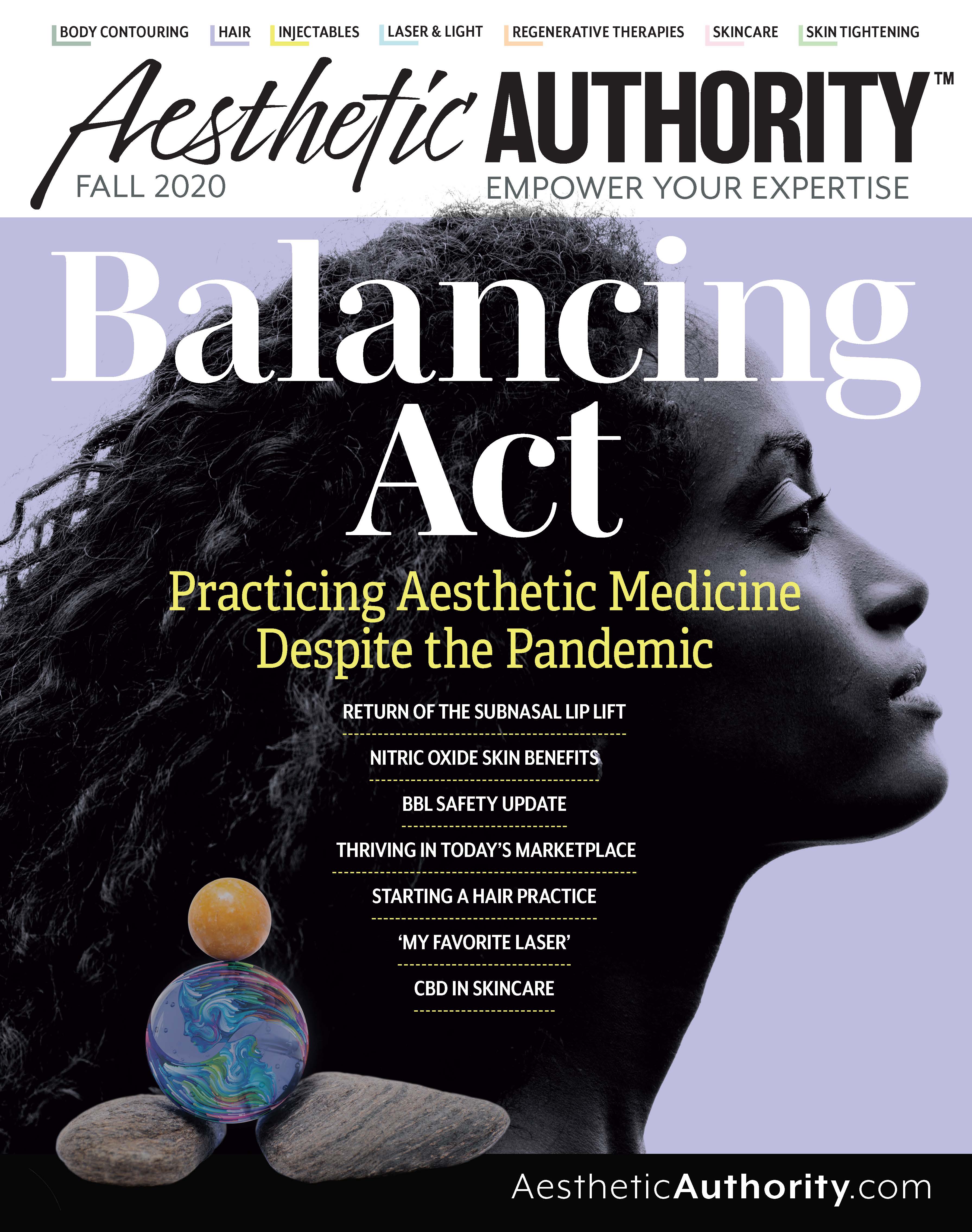- Case-Based Roundtable
- General Dermatology
- Eczema
- Chronic Hand Eczema
- Alopecia
- Aesthetics
- Vitiligo
- COVID-19
- Actinic Keratosis
- Precision Medicine and Biologics
- Rare Disease
- Wound Care
- Rosacea
- Psoriasis
- Psoriatic Arthritis
- Atopic Dermatitis
- Melasma
- NP and PA
- Skin Cancer
- Hidradenitis Suppurativa
- Drug Watch
- Pigmentary Disorders
- Acne
- Pediatric Dermatology
- Practice Management
- Prurigo Nodularis
- Buy-and-Bill
Publication
Article
Aesthetic Authority
Botulinum Toxin as Antidepressant
Author(s):
Recent research findings show that botulinum toxin administered for various medical indications extends beyond control of the intended disease states, offering an antidepressant effect.
From migraines to muscle spasticity, the medical applications of botulinum toxin (BoNT) run far deeper than mere aesthetics. While there is some evidence that the injectable’s wrinkle-relaxing outcomes create a facial feedback effect for a more positive emotional state, a recent study suggests that BoNT may be a legitimate antidepressant.
The study, “Postmarketing safety surveillance data reveals antidepressant effects of botulinum toxin across various indications and injection sites,” published last month in Scientific Reports, suggests that botulinum neurotoxins not only offer a significant antidepressant effect, but the benefits are not injection-site dependent.
In psychology, the facial feedback effect suggests that facial expressions affect emotional experience. Applying this to aesthetic medicine, the theory is that by using BoNT to manipulate facial muscles to express a happier state, people feel better about themselves.
To pursue this line of reasoning, over the last several years, researchers have conducted clinical trials specifically to evaluate Botox injections into the glabella for depression. Although early trials showed positive results, Phase II results came up short.
The researchers who implemented the postmarketing study took note of the variability of results of previous glabellar studies, which had limitations including small numbers of patients, expected cosmetic outcomes from treatment, and an unknown mechanism of effect. In their design, they addressed all by significantly increasing the patient pool and including both aesthetic and functional BoNT treatment.
“These trials were flawed by the impossibility to reliably blind patients for treatment allocation and control for placebo and nocebo effects,” write the study authors. “Our study overcomes these objections as it shows antidepressant effects of BoNT injections in the absence of expectations in this regard.”
Methods
Researchers collected a total of 13,313,287 reports from the adverse event reporting system (AERS; January 2004 to August 2012) and the FDA AERS (FAERS; September 2012 to December 2019). Included reports were defined as “an adverse event of a depression or depressive disorder related adverse event,” using a series of MedDRA terms. The number of reports dropped to 12,185,458 after researchers eliminated confounding factors, including those indicating that patients were treated for depression specifically or taking antidepressants.
They defined eight cohorts of patients who received treatment with onabotulinumtoxinA, abobotulinumtoxinA, incobotulinumtoxinA, or rimabotulinumtoxinB according to the following treatments:
- Cosmetic use
- Migraine
- Spasms/Spasticity
- Torticollis and neck pain
- Blepharospasm
- Hyperhidrosis
- Sialorrhea
- Neurological and urinary bladder disorders
Researchers divided each of the eight cohorts into two groups: those who were treated with BoNT (n = 20,684) and those who were not (control; n = 1214).
Results
Researchers found that compared to the control group, patients who received BoNT treatment had a significantly lower incidence of depression and depression-related AE reports in six of the eight cohorts, including cosmetic, migraine, spasms and spasticity, torticollis and neck pain, blepharospasm, and hyperhidrosis. Although there were no reports of depression or depression-related AEs in the sialorrhea cohort, results were not significant due to small size, according to study authors.
“Our findings show that the antidepressant effect of BoNT administered for various indications goes beyond the control of the intended disease states and does not depend on the location of the injection,” according to study authors. “In this respect BoNT proves superior to the alternative treatment options summarized in the respective comparator group.”
Although researchers admit that they are unable to explain the antidepressant effect at a molecular level, they offer a few possibilities, including transneuronal transport, systemic distribution, distributed muscle stress memory, and even efficacy in the primary indication treatment.
While it remains to be seen if BoNT will be approved in upcoming phase III studies for depression, the authors believe their findings here support using it for the indication while also noting that treatment optimization will require a clear understanding of the mechanism of action.
Reference:
Makunts T, Wollmer MA, Abagyan R. Postmarketing safety surveillance data reveals antidepressant effects of botulinum toxin across various indications and injection sites. Sci Rep. 2020;10(1):12851.






